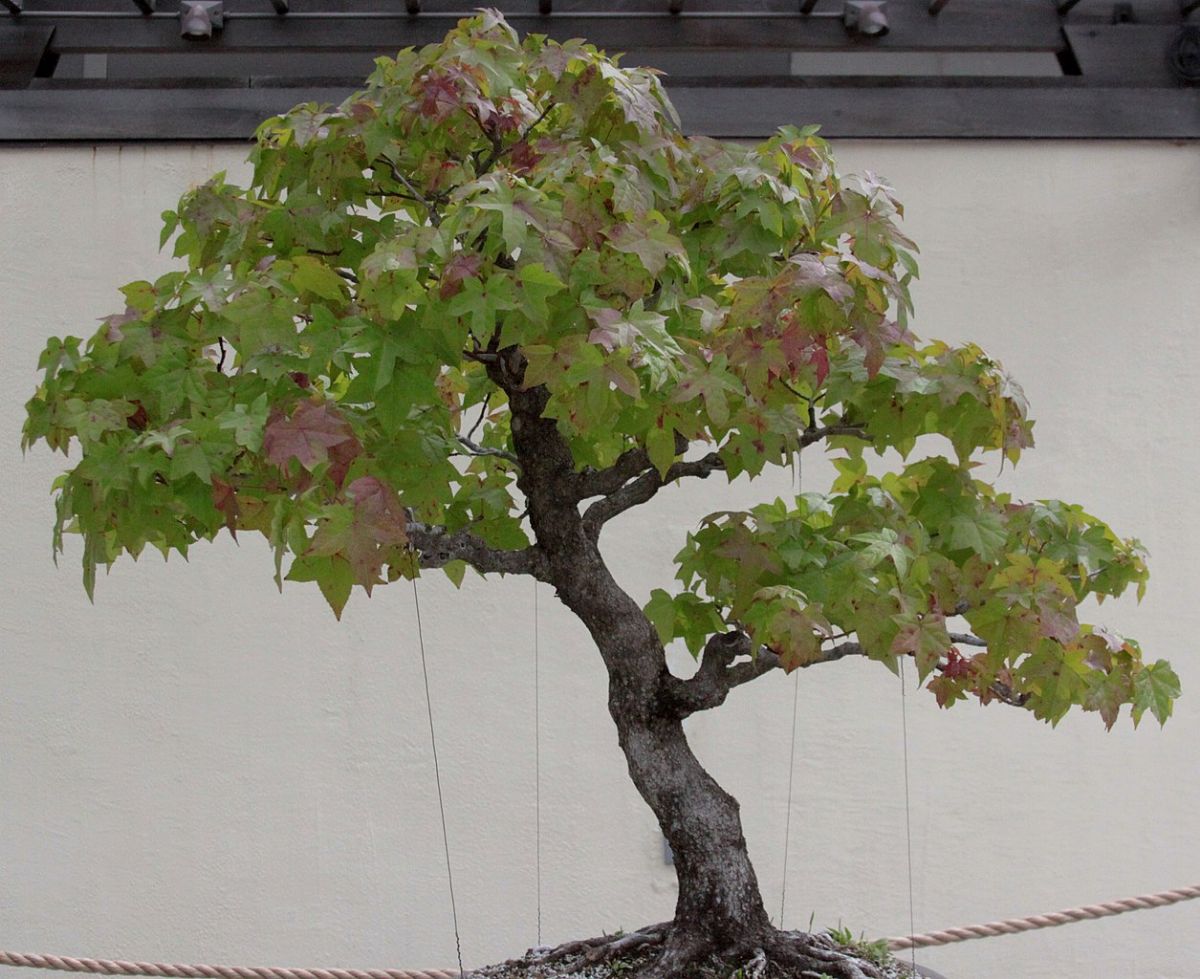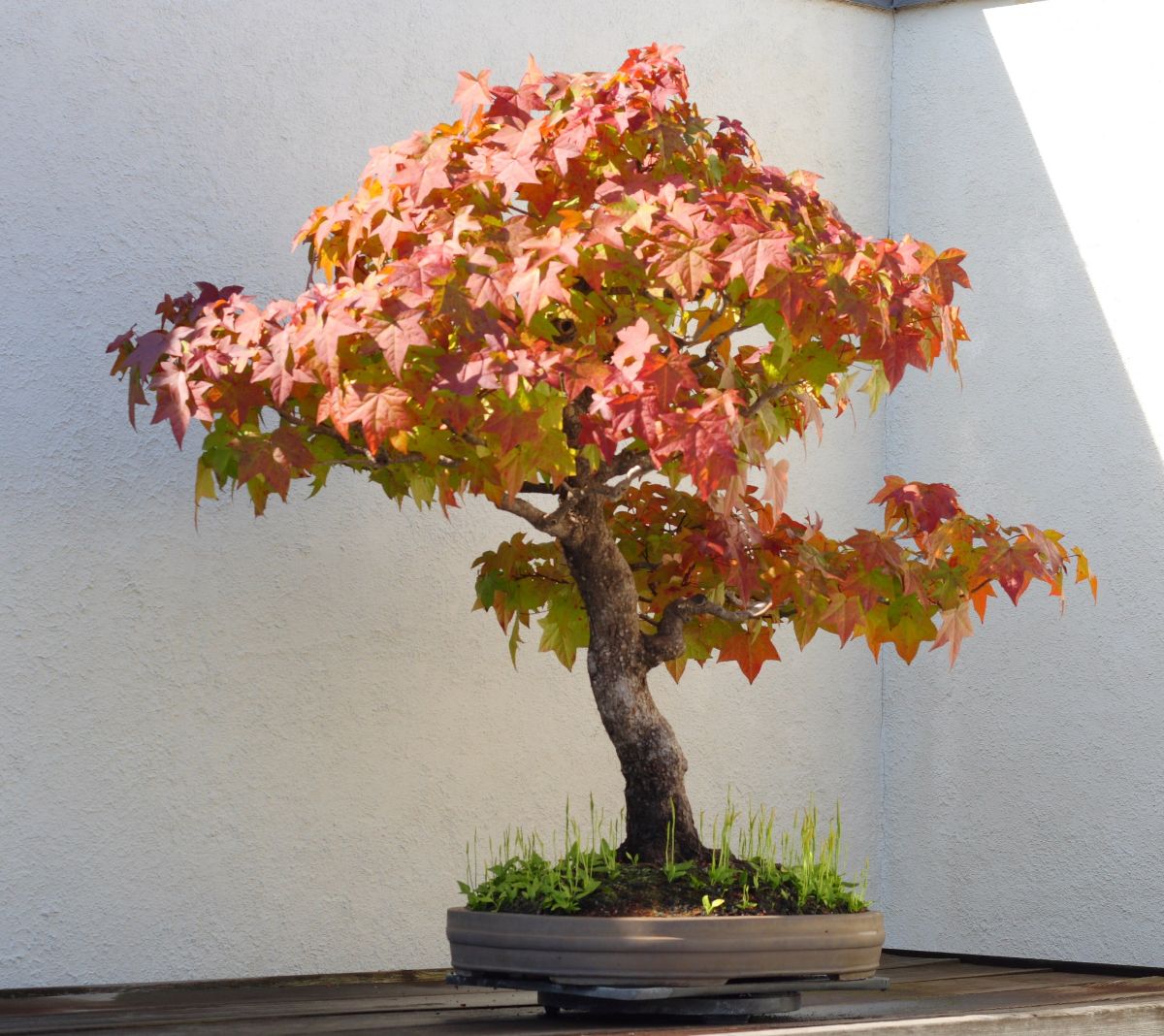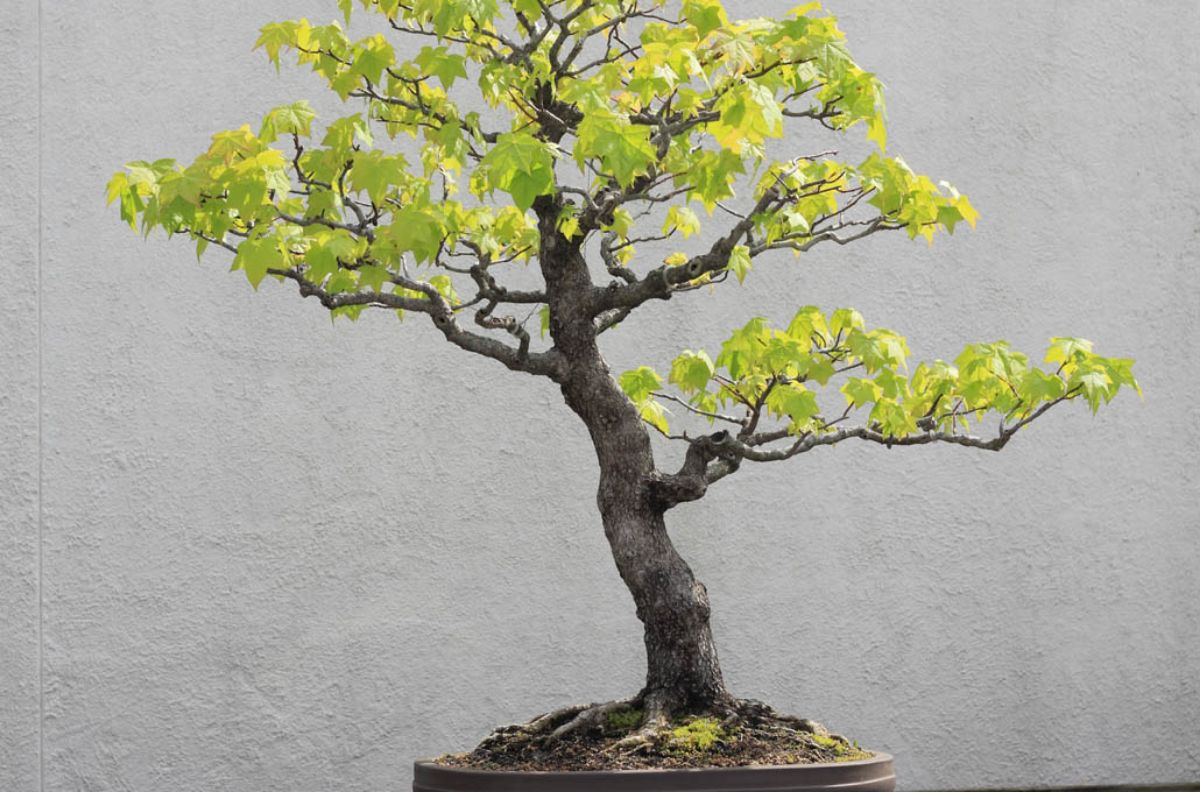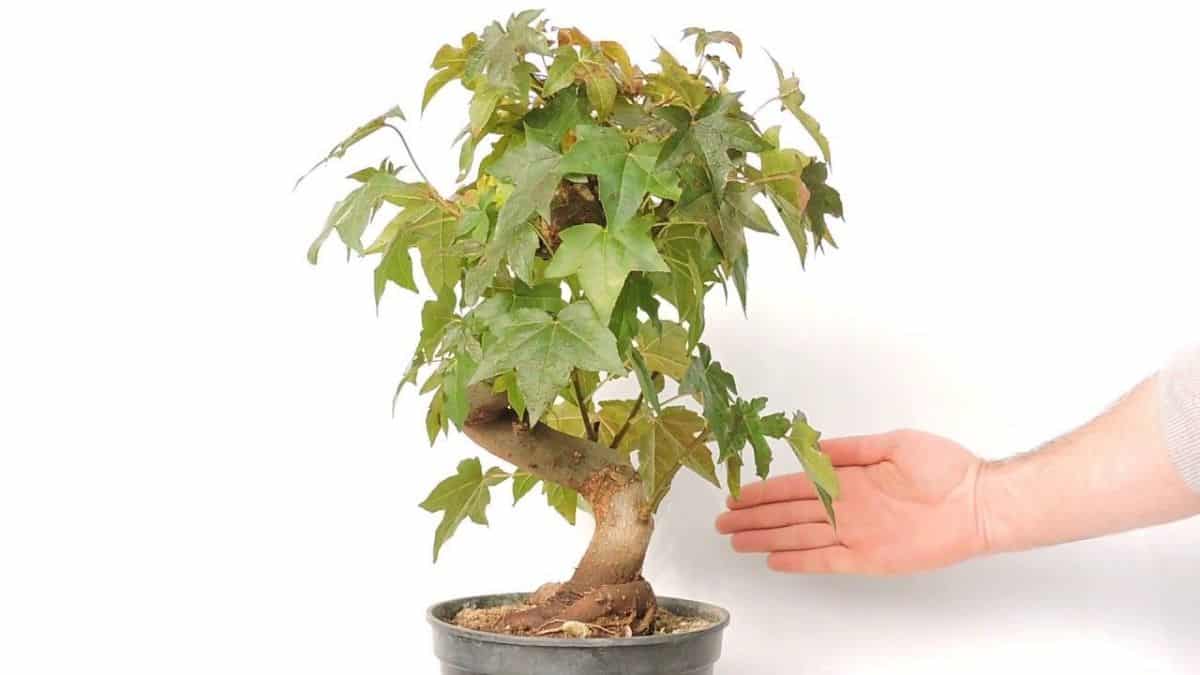
Within the world of bonsai, it is common to find the most accessible ones, those that many supermarkets usually bring. But if you delve a little deeper into that market, you find other options, sometimes easier to take care of. One of them is sweetgum bonsai. But what do you know about him?
Next we want help you learn about one of the miniature trees that can rival the maples in their colorful leaves. Do you want to know what characteristics it has and what are its care? We tell you everything.
How is the liquidambar bonsai

The first thing you should know about this bonsai is the type of tree that is a liquidambar. scientific name liquidambar styraciflua, it is deciduous, that is, it loses its leaves in winter, when it is cold. However, this process implies a variation in the color of its leaves. These turn yellow, orange, purple, burgundy and even red. What does it depend on? Basically of the season and the climate in which it is. For example, in autumn it tends to have a reddish hue while in spring it takes on a green hue that changes to yellow and orange, as well as purple and burgundy as the seasons progress until autumn.
As for the leaves, these are lobed and palmate, like those of the maples. But unlike these, the tonality changes are much easier to achieve than with the other trees.
Its trunk is rough and if you manage to get a fairly old specimen you will realize that the bark will look and feel very similar to cork.
Another aspect that can make you opt for sweetgum bonsai is its great resistance. It is capable of withstanding both cold (frosts of -5ºC) and heat (35ºC or more if it is already adapted). It is native to the southern United States, as well as Guatemala and Mexico.
Sweetgum bonsai care

Source: bonsaiempire
Now that you know a little more about sweetgum bonsai, how about if we talk about its care? Sometimes, knowing these you can know if it is the bonsai that you can take care of at home or, on the contrary, that it is not the most suitable. In general, this bonsai is of medium growth. What does that mean? well what It can grow, as long as each and every one of its needs is met, about 60 centimeters the first year of life. Then it will go a little slower, but not much more.
Taking this into account, the care it needs to develop correctly are the following.
Location
Like any tree, it is for outdoors rather than indoors. We are talking about a specimen that likes the sun and that is why it is recommended to place it outside the house. It can be on a terrace, a balcony, the garden, etc.
does not require a minimum hours of direct sun, although it is recommended that you give it some, although be careful if the sun burns a lot because it could cause it to lose its leaves and go dormant (and that will cause it to wither completely).
If you live in one area where the sun is very intense, then place it in an area where it gets sun only in the early or late hours of the day.
Temperature
As we have mentioned before, this specimen tolerates both high temperatures (up to 35ºC will be fine, beyond that it can suffer a little the first year of adaptation), as well as low temperatures (frosts down to -5ºC).
Still, it is convenient that be protected to avoid major problems in this tree. The first year of adaptation is perhaps the most important because it is where the climate and temperature of that home will live in all seasons. After that year, the specimen becomes more resistant (although that does not mean that it does not have to be taken care of).
Substratum
As you know, the soil you use in bonsai is very important. And in this sense you should know that the best mixture for liquidambar bonsai is, without a doubt, a combination of akadama and kiryu with earthworm humus. To make it more drained, add volcanic gravel or pumice so that the roots breathe well.
You need change the land every 2 years, since, being of medium growth, you may have to take care of it when the roots come out from below). Always do it at the end of winter, when the buds are about to explode.
Irrigation

Source: Pinterest
It does not tolerate drought very well, so it is recommended that you water it often in summer, and less in winter. It is best to ensure that your first layer of substrate is dry before watering because it does not like waterlogging at all and could cause root rot.
Use water with low dilution, since It will not like anything that the pH of the soil is altered.
In addition, it is important to have good humidity in the environment so that it develops properly.
Subscriber
During the spring and summer seasons, it is advisable to add a little organic fertilizer to help it develop better. We recommend the prolonged release fertilizer as this will allow you to have all the necessary nutrients.
Of course, if you have transplanted it in the spring, it is better not to fertilize it because it may have too many nutrients and you will cause the opposite effect, which will cause it to wither.
Pruning
Pruning is best done in winter, which is when it goes into hibernation and thus prevents it from losing sap or affecting its development. Remove dead, diseased, damaged, etc. branches first. to later remove others that you do not want.
Of course, it is advisable not to prune it too much and take care of the cuts to avoid diseases.
Plagues and diseases
Although it is quite sturdy, the green aphid it can easily attack you, especially on tender shoots. Another pest to take care of is the limpet mealybugs.
As for diseases, root rot (due to excess water) can be deadly for these specimens.
Multiplication
The reproduction of sweetgum bonsai carried out by seeds (which are very easy to germinate and carry out) as well as by cuttings and layering. The latter can be a bit more complicated to achieve if it is one of the first times you do it.
Now that you know the liquidambar bonsai, do you dare to have it in your home?